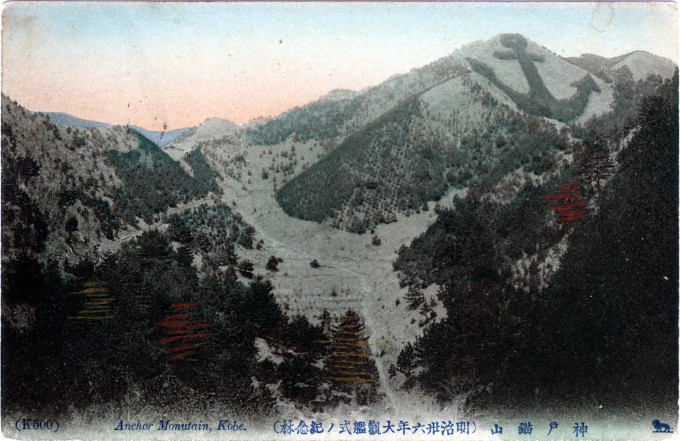“Kobe became well-known worldwide after the opening of Hyogo Port (the current Kobe Port) to foreign trade in 1868. Hyogo Port had a natural bay good that provided excellent anchorage because it was located in the calm Seto Inland Sea. After the opening of the port, many Westerners arrived at Kobe, establishing a Foreigners’ Settlement. Through them, Western food, clothes, and entertainment found their way into Japanese culture, making Kobe one of the first cities in Japan to be introduced to foreign culture. Kobe is also known as the birthplace of jazz and the cinema in Japan.
“In 1903 when Emperor Meiji came to the mountain for Kankanshiki, for a naval review ceremony, elementary school children lined up in the shape of an anchor (ikari) at Kuchiichiri, a triangulation station, on the side of the mountain waving the national flags to welcome the Emperor. Thereafter, the mountain was named ‘Mt. Ikari’ when memorable pine trees were planted on the marks of the anchor. Pine trees were also planted on a mountain next to Mt. Ikari, in shape of Shisho (‘city symbol’).
“Both Mt. Ikari and Shisho have been illuminating permanently generated by the solar and wind power, a fact which made them shine also after the Great Hanshin earthquake in 1995 when other power sources were interrupted. Both landmarks are therefore considered as lights of hope.”
– Wikipedia
Ikariyama (“Anchor Mountain”), Kobe, c. 1910.
1910s • Amusements & Recreations • Kyoto-Nara-Osaka-Kobe • Outside Tokyo
Tagged with: Emperor Meiji, Foreign Settlements, Kobe, Trade
Please support this site. Consider clicking an ad from time to time. Thank you!


